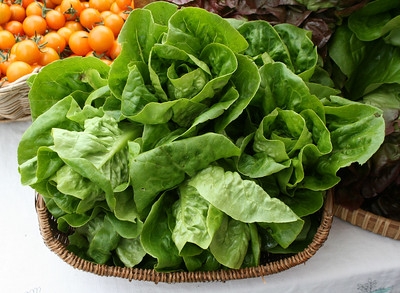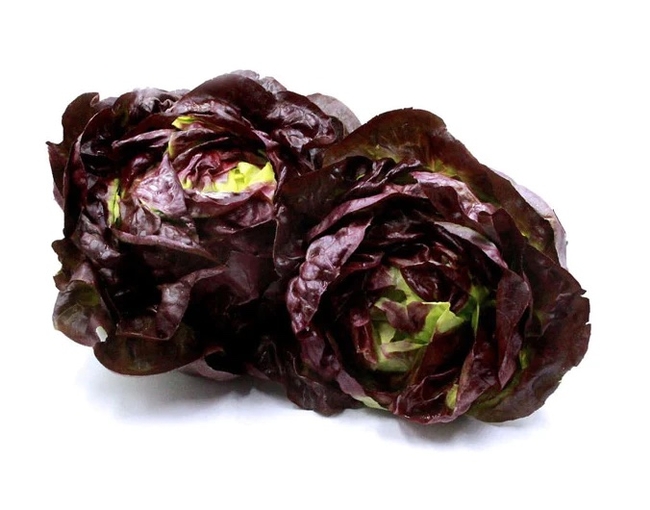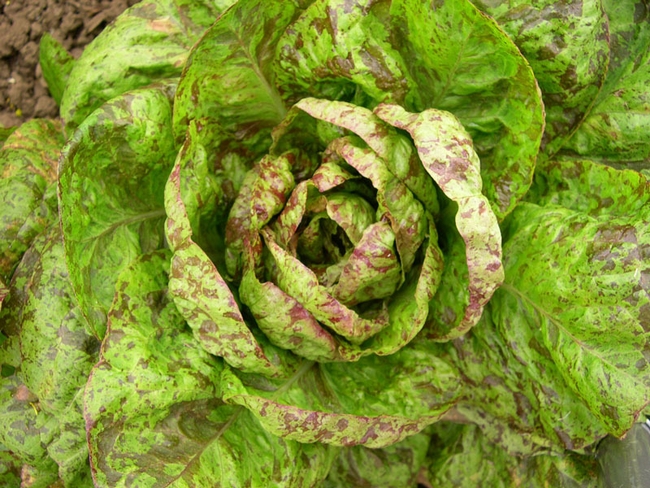I love salads. A salad with my dinner is almost as essential as a glass of wine.
When most of us think of a green salad we think of lettuce. Lettuce has been cultivated for thousands of years. The word lettuce comes from the Latin for milk, due to the milky liquid it produces when a leaf is broken.
Romaine lettuce, also known as Cos, originated on the Greek island of Cos in the Aegean Sea. It was adopted by the Romans, hence the name romaine. It is my favorite lettuce, so when the Master Gardeners' Field Test committee decided to try three varieties of romaine, I was all in.
The three romaine lettuces we chose were Little Gem, Truchas and Flashy Trout Back. Little Gem forms a low small green head. Truchas is similar in size and shape but dark red. Flashy Trout Back has larger leaves that are light green with red speckles. It forms larger, more cylindrical heads.
We started our seeds in early September for a fall crop. Most of us started our seeds in cell packs and transplanted the seedlings to 4-inch pots, then into the ground, raised beds or containers.
Lettuce seeds require light to germinate, so they need to be planted with very little soil on top. This is one reason to start them in pots. Sown outdoors they are vulnerable to birds, slugs and other disturbance. Planting seeds directly into the vegetable bed will work, but the number of successful plants is less predictable.
Little Gem and Flashy Trout Back were similar in speed of germination and maturation. Truchas grew much more slowly. By early November most of us were harvesting lettuce.
Little Gem was the favorite from the start. We found it to be crisp and sweet. Truchas was similar in flavor and also added color to our salads.
As the weeks passed, some of us noted that the Little Gem plants were going to seed, but the Flashy Trout Back were holding their heads longer. At this point, we began to appreciate the latter variety more. At first it had seemed a bit limp, but as it matured the leaves became firmer and tastier. No one reported bolting of the Truchas, probably because it matured slowly and produced heads later in the season.
Slugs were the most common pest. UC guidelines advocate collecting and disposing of slugs and snails manually and using baits as a last resort. If you use slug bait, look for one that contains iron phosphate. These baits are the only ones that are safe for children, domestic animals, birds, fish and other wildlife.
At the end of the trial, we all agreed that we would grow lettuce again. Some of us were so encouraged by our success that we decided to see what would happen if we planted lettuce every month for a year.
We decided to plant only Little Gem for this trial. Germination was faster in the warm months (3 to 4 days) than in the cold months (up to two weeks). However, in really hot weather, some seeds appeared to fail completely. They then suddenly sprouted a month or more later. We learned that lettuce seeds will sometimes respond to hot weather by going dormant, then sprout later when it's cooler.
During the transition from late spring to summer we experienced some early bolting, meaning the lettuce developed a seed stalk prematurely. Seeds sown between April and July sometimes bolted before forming heads. Later, some plants, while not going to seed, still did not form proper heads. Instead, they stayed small and formed elongated heads with yellowing lower leaves.
Lettuce is clearly a cool-weather crop. Despite some problems in the hottest months, we were able to start seeds and harvest lettuce every month of the year.
We had to take extra care in the summer, sometimes covering the plants when the sun was blazing, and always keeping them adequately watered. We also noticed that, once heads formed, we had to harvest them immediately. Leaving them even a day or two longer in the summer caused them to form seed stalks.
We asked trial participants if they would change their planting schedule because of this experience. The answer was a resounding yes. Those of us who stuck to the schedule were surprised that it wasn't that hard.
We intend to continue with successive plantings of various kinds of lettuce. Our experience inspired the idea of doing the same with other vegetables.
There's almost no end to the vegetables that you can rotate through your edible garden over the course of a year. We are fortunate to live in a climate mild enough to experiment with gardening in every season.
Gardening with the Masters: Join UC Master Gardeners of Napa County and Ole Health on Saturday, June 18, from 10 am to 1 pm at Ole Health South Campus, 300 Hartle Court, Napa, for a workshop on gardening. Children five years old or older, accompanied by an adult, are welcome. Attendance is limited. Register here: https://www.olehealth.org/our-services/community-outreach-resources
Emergency Preparedness Fair: Join UC Master Gardeners of Napa County on Tuesday, June 21, from 4 pm to 7 pm, at the County of Napa Administrative Building, 1195 Third Street, Napa, to learn what you can do to prepare for emergencies. Learn about the resources in Napa County that are here to help you and how to landscape to lower the fire risk to your home. The event is free and no registration is required.
Workshop: Join UC Master Gardeners of Napa County for a workshop on “Landscaping in Fire-Prone Areas” on Thursday, June 23, from 6:30 pm to 8 pm via Zoom. Learn how to reduce the risk around your home. Register [https://surveys.ucanr.edu/survey.cfm?surveynumber=37288] to receive the Zoom link.
Got Garden Questions? Contact our Help Desk. The team is working remotely so please submit your questions through our diagnosis form, sending any photos to mastergardeners@countyofnapa.org or leave a detailed message at 707- 253-4143. A Master Gardener will get back to you by phone or email. For more information visit https://napamg.ucanr.edu or find us on Facebook or Instagram, UC Master Gardeners of Napa County.



